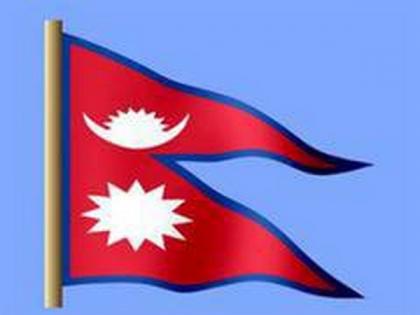Nepal's new regulation to end solo expeditions of 8000er's and hike in royalty, including Mount Everest, comes into effect
By ANI | Updated: September 1, 2025 01:05 IST2025-09-01T01:02:59+5:302025-09-01T01:05:12+5:30
Kathmandu [Nepal], September 1 : Nepal's new regulation to end solo expeditions and hikes in the royalty of the ...

Nepal's new regulation to end solo expeditions of 8000er's and hike in royalty, including Mount Everest, comes into effect
Kathmandu [Nepal], September 1 : Nepal's new regulation to end solo expeditions and hikes in the royalty of the 8000ers has formally come into effect from Monday, September 1. Earlier in February, the Himalayan nation amended the mountaineering regulations by publishing them in the Nepal Gazette, the government's official publication.
The Sixth Amendment of the mountaineering regulation released on February 3 this year bars climbers from solo expeditions on all the 8000-metre peaks. The amendment to Rule 6 of the previous regulation has been made to prohibit climbers from undertaking solo expeditions of the 8000ers.
"When climbing a mountain peak with an altitude of more than eight thousand metres, every two members of the mountaineering team must be accompanied by at least one altitude worker or mountain guide, and when climbing other mountains, the mountaineering team must take at least one mountain guide with them," the recently introduced provision states.
This new provision is now applicable to all mountains above 8,000 meters, including the highest peak, Mount Everest.
With new regulations in effect, the era of solo climbing on the peaks has formally ended, as the government has determined that no one, regardless of their experience, should go solo to the mountain. This will now also apply to alpine-style or expedition-style climbers.
The recently adopted changes have also formally publicised the hike in royalty fee for the foreign climbers attempting to summit Mount Everest from the standard south route in spring to USD 15000 per person.
The spring season expedition, which sees a high influx of climbers in the Himalayan Nation from March to May, used to be USD 11,000. The new regulation has also increased the climbing royalty for the autumn season, which runs from September to November, to USD 7,500 from the existing USD 5,500.
Similarly, the Winter expedition, which runs from December to February and the monsoon, which runs from June to August, have also been revised to USD 3,750 from USD 2,750.
The updated provision has also incorporated the revised fees for the other 8000ers. The royalty of the spring expedition has increased nearly twofold from 1800 to 3000 USD.
The autumn fee now stands at USD 1,500, up from the existing USD 900, while the winter and monsoon expeditions have become more expensive, having been revised from USD 450 to USD 750.
Regarding Nepali climbers, the royalty for the usual route in the spring season has doubled from NRS 75,000 to NRS 150,000. In 2015, Nepal revised the royalty fee by switching from a group-based system to a uniform fee of USD 11,000 per climber for the spring season via the normal route.
Regarding the slew of changes that the Himalayan Nation has adopted lately, family members of climbers, guides, and high-altitude base camp workers are also banned from the base camp. In the event of prior approval from the tourism department, family members can be exempt from a stay at the base camp, not exceeding two days, according to the new regulation.
In addition, the new regulatory measures have also assigned the high-altitude guides to "self-declare" their clients' successful summit of the peak. To prove the successful summit, the expedition organisers and liaison officers have been mandated to submit original photos showing the climber's face clearly.
To establish the authenticity of the successful summit, the photo must feature mountain ranges in the background, which is the new eligibility criterion for receiving an Everest Climb certificate.
Apart from the climbers, the revised regulatory provision has increased the daily allowance for liaison officers, the daily wages of high-altitude guides, and the wages of base camp workers paid by climbers. Liaison officers' daily wages have increased from NRS 500 to NRS 1,600. Sirdars (lead Sherpas) will now receive NRS 1,500 daily, up from NRS 500.
In a similar vein, high-altitude guides' wages have jumped from NRS 350 to NRS 1,200 per day. Base camp workers' daily wages have increased from NRS 300 to NRS 1,000.
In an attempt to curb pollution in high mountains, climbers from this year's spring must bring their waste, including human waste, back to base camp for proper disposal. Climbers are required to carry biodegradable bags for waste collection in the upper reaches.
Nearly 8,900 people have summited the world's highest peak from Nepal's side since 1953.
Disclaimer: This post has been auto-published from an agency feed without any modifications to the text and has not been reviewed by an editor
Open in app